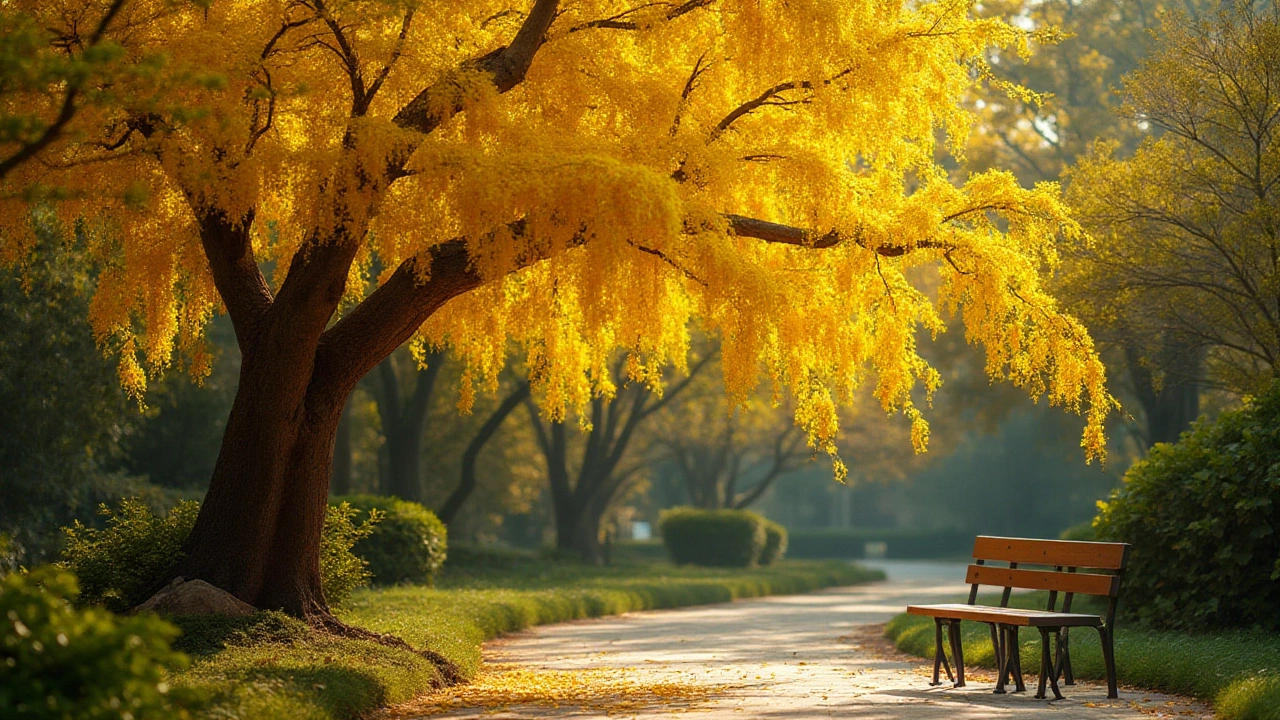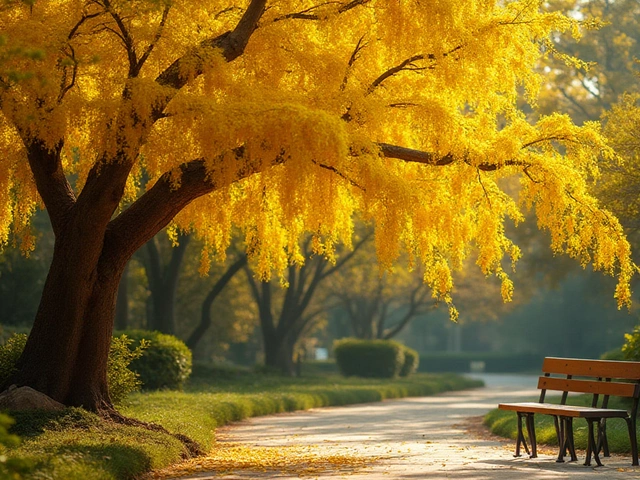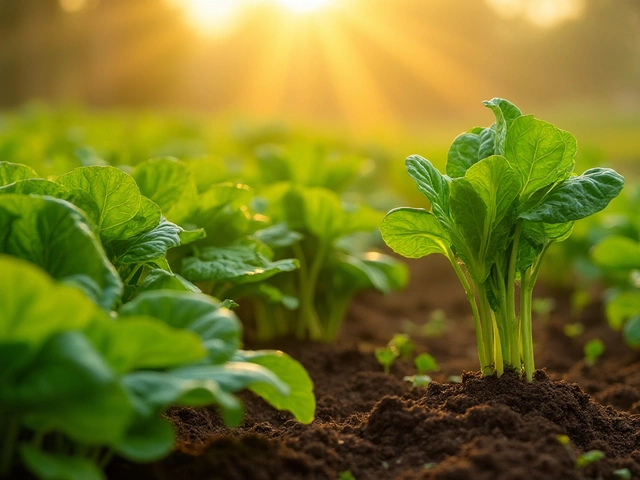Imagine walking through a lush garden where every corner bursts with lively colors and delightful fragrances. In India, where the climate can nurture an array of plant life, fast-growing flowering trees are a dream for those who don't want to wait too long for beauty to flourish.
These trees aren't just great for an aesthetic boost; they also offer shade and sometimes even edible rewards. Choosing the right species according to your region, soil type, and garden size can ensure a thriving garden with minimal fuss.
By understanding their needs and preferences, you can enjoy the rapid growth and stunning display almost year-round. Get ready to explore some of the most remarkable fast bloomers that you can add to your Indian garden.
- Popular Fast-Growing Flowering Trees
- Ideal Climate and Soil Conditions
- Planting and Maintenance Tips
- Advantages of Planting Fast-Growing Trees
Popular Fast-Growing Flowering Trees
When you're dreaming of adding a splash of color to your garden with flowering trees, speed might just be as important as the beauty they bring. In India, the array of fast-growing options is quite impressive. Let's delve into some of these trees that are bound to satisfy your need for beauty and quick growth.
The Gulmohar, also known as the flame tree, is renowned for its fiery red and orange blossoms that seem to set the landscape on fire. It's often the highlight in urban settings where the need for shade and ornamental value are paramount. Its rapid growth rate makes it a top choice for impatient gardeners looking for quick results. With its lush foliage during the peak of summer, the Gulmohar is more than just a floral spectacle; it also provides relief from the scorching sun.
Another standout is the golden shower tree, known scientifically as Cassia fistula. Its name alone suggests a cascade of bright yellow, sun-like flowers that bring cheerfulness to any space. This tree not only grows swiftly but its blooms are a sign of summer's arrival. Often associated with cultural and religious significance, the golden shower tree is deeply rooted in tradition, making it a popular selection among Indian gardeners. "The vibrant display of Cassia fistula marks important festivals across the country," aptly notes a revered horticulturist.
Moving on to the Himalayan region, the Rhododendron arboreum is a favorite with its scarlet flowers that bloom even on the hillsides. It adapts well to various altitudes, making it useful for both low-lying and elevated gardens. This species is not only chosen for its beauty but also for its resilience and environmental adaptability, an important factor for those living in regions with fluctuating weather patterns. Being native, it thrives with minimal human intervention while adding ecological value.
Let's not overlook the beauty of the champa, or the plumeria. Known for its heavenly fragrance and delicate petals, the champa tree rapidly becomes a centerpiece in gardens where an aromatic ambience is desired. Grown widely in the southern parts of India, it is cherished for its spiritual significance and uses in cultural ceremonies. Who can resist the allure of a flowering tree that's as captivating to the nose as it is to the eyes?
Finally, there's the drumstick tree, or moringa, which offers the dual benefit of flowers and edible produce. With its fast-paced growth, it not only beautifies a garden but also contributes to your pantry. Recognized for its health benefits and nutrition, growing moringa is like having a pharmacy in your backyard. It's a depiction of utility meeting aesthetics, ideal for those who want more than just ornamental appeal from their garden trees.
The choice of flowering trees ultimately depends on your regional climate, soil type, and personal preference. These selections provide a good starting point, ensuring that your garden will soon pique interest with its quick transformation and stunning elegance.
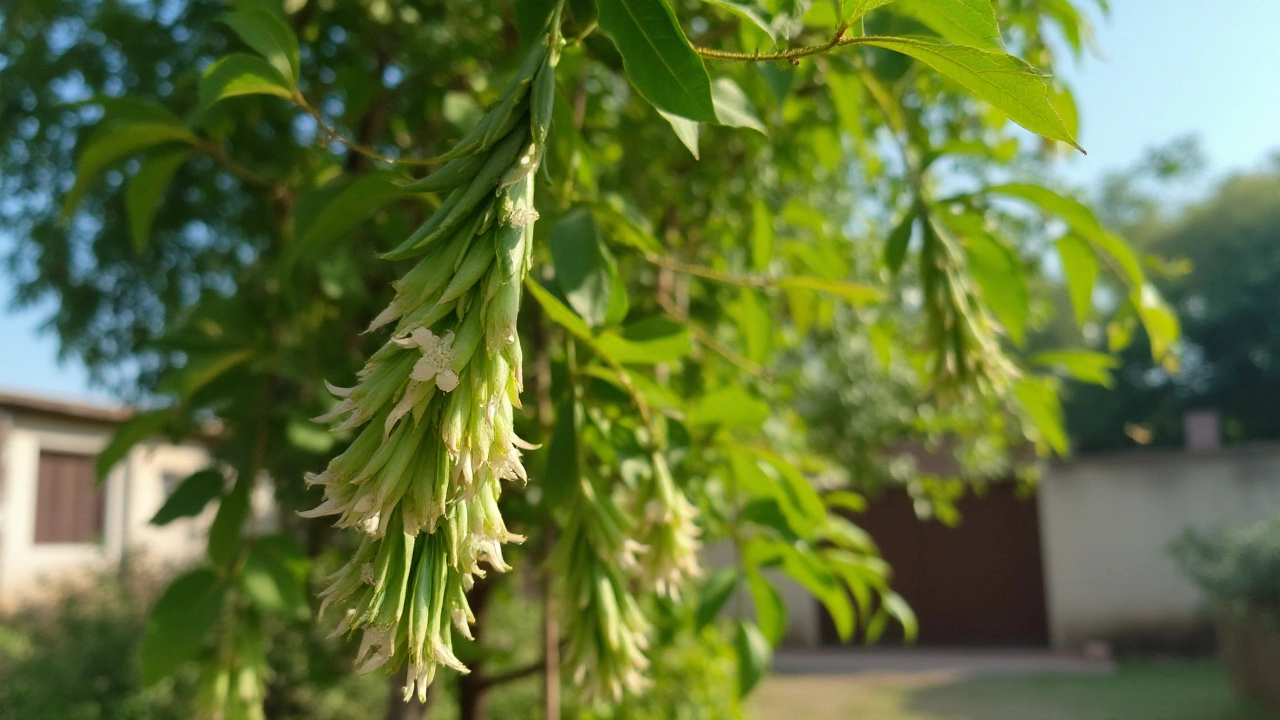
Ideal Climate and Soil Conditions
When it comes to planting fast-growing flowering trees in India, understanding the climate and soil conditions is critical to success. India's vast landscape is dotted with diverse climatic zones, from the humid tropics to arid deserts, and each supports different plant species. Most fast bloomers, like the golden shower tree, thrive in tropical and subtropical climates. These areas provide adequate warmth and sunlight, essential for robust growth and blossoming.
The gulmohar, with its brilliant fiery blooms, prefers an environment that oscillates between warm and hot, making it perfectly suited to Indian summers. Delhi's gardens have seen Gulmohar trees transforming sidewalks with a canopy of flaming red, especially in May and June during the peak flowering season.
Soil types can vary significantly across India, but many flowering trees display remarkable resilience. While loamy soils rich in organic matter are ideal for successful nurturing, some varieties, like the drumstick tree, exhibit adaptability to less-than-perfect conditions, even thriving in poor and rocky soils with adequate drainage. Consistent water supply, especially during dry spells, is a necessity, though many native trees have adapted to meet their moisture needs via deep root systems. "In landscape gardening, soil is much more than a mere surface to root plants," notes Dr. Radhika Sharma, a well-regarded horticulturist. "It acts as a crucial ecosystem in itself."
Let's not forget, the pH level of the soil can also play a role in a tree's health and growth speed. While trees like the frangipani prefer a slightly acidic to neutral environment, others might do just fine in mildly alkaline soils, typical in many Indian regions. Gardeners can enhance their soil's fertility using natural fertilizers, such as compost, which retains water better and provides essential nutrients like nitrogen and phosphorus crucial for photosynthesis and growth.
Some trees, due to their ability to fix nitrogen, actually contribute to soil health, enriching it for future plantings. This enriches the ecosystem and helps create a sustainable garden. Yet, it's important to remember, no matter how adaptable a tree is, its initial performance will often hinge on how well its surroundings meet its basic climate and soil demands.
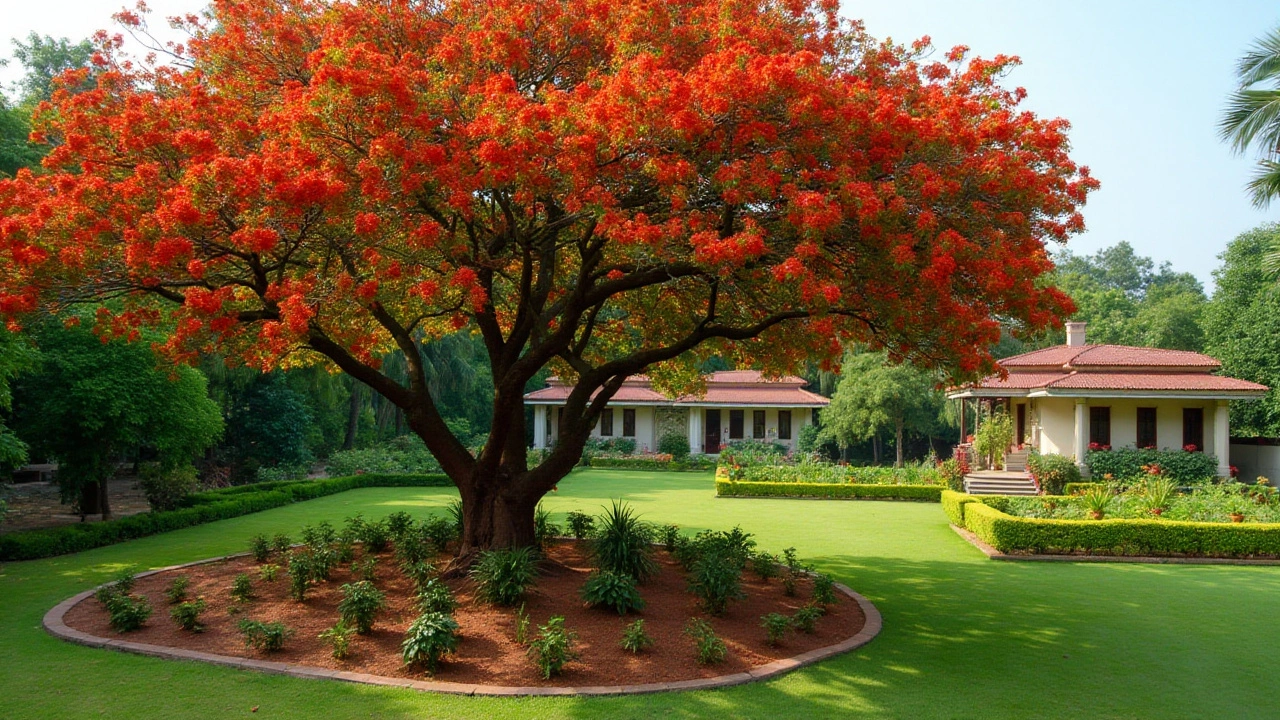
Planting and Maintenance Tips
Planting a flowering tree begins with choosing the right spot, keeping in mind the tree's requirements and the garden's characteristics. Many fast-growing tree species thrive best in areas with full sunlight exposure, requiring at least six hours of sunlight daily. Consider the soil type and drainage capabilities, as some species might need well-drained sandy soil, while others prefer loamy earth with ample moisture retention. Before planting, it's good to test the soil pH – most flowering trees flourish in slightly acidic to neutral pH levels. Adding organic compost or manure can enhance nutrients and improve soil health significantly.
When it's time to plant, ensure you dig a hole twice the width of the tree's root ball but no deeper than its height. This allows roots to spread horizontally, establishing a strong foundation. Carefully remove the tree from its pot and gently loosen any circling roots. Position the tree in the hole, ensuring that the top of the root ball is level with the ground surface. Fill the hole halfway with soil, water thoroughly to eliminate air pockets, and then fill the rest. Mulching with organic material like cocoa hulls or wood chips not only retains soil moisture but also suppresses weeds.
Consistent maintenance plays a key role in the health and growth of your flowering tree. Watering is crucial, especially during the first two years as trees work hard to establish their roots. In hotter regions, young trees may need watering multiple times weekly, while mature trees can be more drought-resistant. Applying a balanced slow-release fertilizer in early spring encourages growth and vibrant blooming. Pruning is another facet of care, removing dead or diverging branches to improve air circulation and overall tree structure.
Pest and disease management should not be overlooked. Watch for signs such as discolored leaves, abnormal growths, or presence of insects like aphids or borers. Natural pest control methods, like introducing predatory insects or using neem oil, can be effective. Sometimes, expert advice is beneficial, as a horticulturist, Jane Doe, once remarked, "Understanding your tree's needs and environmental pressures can decipher myriad issues before they affect health."
The right balance of attention and intervention can yield stunning results without overwhelming effort.
If you're ambitious about data-driven gardening, measuring growth statistics over time can provide insights into how your maintenance routine correlates to your tree’s development. Developing a simple table to track growth, climatic conditions, and fertilizer schedule can offer informative patterns.

Advantages of Planting Fast-Growing Trees
Planting fast-growing flowering trees in your garden or on your property in India offers numerous benefits beyond merely enhancing the aesthetic appeal. One of the most significant advantages is the immediate gratification of beauty and shade, elements that take years to achieve with slower-growing species. In climates like India's, where temperatures can soar, the quick development of a leafy canopy can provide much-needed relief, making outdoor spaces more pleasant.
Another benefit of these trees is how they contribute positively to the environment. Fast-growing species like the drumstick tree absorb carbon dioxide more quickly than their slower-growing counterparts, which can be critical for areas facing pollution challenges. These trees also serve as havens for wildlife, offering birds and insects a safe habitat and food source, promoting biodiversity in urban and rural environments alike.
Moreover, fast-growing trees can be helpful in soil stabilization and erosion control. When planted strategically on hills or slopes, their rapid root development secures the soil, preventing erosion caused by heavy monsoon rains, which are common in many parts of India. This makes them not only visually appealing but also practical for land management and conservation.
While discussing the benefits, it's important to note the economic advantages too. For those interested in agroforestry or production, such trees can start yielding products like fruits, seeds, or flowers in a relatively short time. For example, the golden shower tree not only dazzles with its vibrant blooms but can also be utilized for its medicinal properties, potentially providing an income stream much sooner than other options.
In landscaping, fast-growing flowering trees can also serve as excellent windbreaks and privacy screens. A well-placed row of gulmohar or champa can protect smaller plants, conserve garden humidity, and create a peaceful enclosed space in bustling urban centers, enhancing both microclimates and personal tranquility.
According to horticulturist Dr. Anjali Rao, "Choosing the right fast-growing species is crucial for long-term garden success. These trees should match local soil and moisture conditions to thrive with minimal maintenance."
Creating an ecosystem that works harmoniously and efficiently is much more achievable when these factors are taken into consideration.With minimal effort, fast-growing flowering trees offer a range of aesthetic, ecological, and economic rewards, making them an excellent choice for any gardener in India seeking to cultivate a lush, healthy, and sustainable environment.
